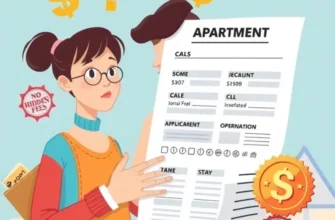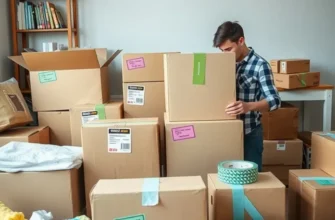Moving from one place to another can feel a bit like an Olympic sport—complete with lots of sweat, unexpected hurdles, and the occasional emotional breakdown. For many young adults, first-time renters, busy professionals, couples, and growing families, the prospect of packing up your life and relocating can be as daunting as it is exciting. So, how do you decide whether to call in the pros or channel your inner DIY guru? After all, hiring movers might seem like a smart choice when you’re juggling work, social commitments, and that Netflix binge you promised yourself. On the other hand, wouldn’t it be so much more satisfying to conquer your mountain of boxes all on your own? Let’s unpack both sides—pun fully intended—and help you navigate the decision-making process painlessly (and maybe even with a smile).
The Pros and Cons of Hiring Movers: Is It Worth the Splurge?

When faced with the monumental decision of moving, the question of whether to hire movers can feel daunting. The allure of a stress-free moving day can be tempting, but is it truly worth the splurge? Let’s delve into the pros and cons of bringing in the professionals versus taking a DIY approach.
Advantages of Hiring Movers
One of the most compelling reasons to hire professional movers is the time saved. Moving can be a time-intensive process, between packing up your belongings, renting a truck, and physically moving items from point A to B. Movers bring efficiency and expertise, potentially shaving hours, if not days, off your logistics timeline.
Next is the preservation of your energy. Packing and moving heavy furniture or delicate items can be physically demanding. Professional movers have the training and equipment to handle heavy lifting safely, sparing you from possible injury.
Moreover, movers often come with insurance that covers any damage to your belongings during transit. This safety net can offer peace of mind, knowing that valuable items are protected should mishaps occur.
Disadvantages of Hiring Movers
However, these services come at a cost, sometimes a hefty one. Expect to pay a premium for their expertise and speed, which can strain your moving budget. For young adults and new renters, every dollar matters.
In addition, hiring movers requires a loss of control over the process. You must trust strangers with your possessions and rely on their timetable. If you prefer meticulous packing or have precise schedules to adhere to, this may be unsettling.
There’s also the risk that even professional movers can have off days, leading to late arrivals or logistical errors. While rare with reputable companies, it’s a consideration when evaluating if the convenience of hiring movers outweighs potential inconveniences.
When to Consider DIY Moving
If budget constraints are significant, DIY moving may be more appropriate. It allows you full control over timelines and packing methods, ensuring everything is done to your personal standards. Additionally, DIY moving can become a bonding experience when shared with friends or family.
For those renting and looking to improve their financial literacy, understanding the true cost of moving is a valuable lesson. A helpful guide might include planning costs or resolving rental billing errors which don’t necessarily involve moving but help improve financial planning skills. For more insight on financial strategies as a renter, consider exploring this financial planning for renters guide.
Ultimately, the decision to hire movers or go DIY largely depends on personal priorities. Time versus cost is a significant factor, as are preferences for convenience and control. Weigh the pros and cons carefully, keeping your specific circumstances in mind, to ensure the move into your new space is as smooth as possible.
Channeling Your Inner DIY Expert: What You Need to Know

Unleashing your inner DIY expert when moving can be a rewarding venture both financially and personally. While it might seem daunting at first glance, a well-planned approach can ensure a smooth transition. Here’s a deep dive into executing a DIY move, complete with tips, critical supplies, and considerations.
Essential Supplies
First things first: gather your supplies. Start with the basics—boxes, tape, markers, and bubble wrap. Consider using recycled materials or asking local stores for spare boxes to cut costs. Invest in a sturdy dolly to save your back from unwanted strain, especially when moving heavy items.
Furniture pads are a must to prevent scratches and damage. If you have fragile items like mirrors or artwork, special pads or blankets can provide much-needed protection. Don’t forget labels for each box; they can save you a headache when unpacking in your new home.
Maximizing Cost Savings
One major perk of a DIY move is cost savings. Professional movers can be expensive, especially for long-distance relocations. By opting to do it yourself, you’re primarily investing your time and energy. To keep costs low, borrow or rent equipment instead of buying it. Local stores might even offer some items for short-term use.
To further cut expenses, plan your move during weekdays or off-peak seasons when rental vehicles are cheaper. Think about enlisting friends in exchange for pizza and drinks—because nothing says teamwork like a combination of carbs and camaraderie.
Physical Effort and Experience
A critical element to consider is the physical effort involved. DIY moves require lifting, carrying, and potentially climbing stairs with bulky items. Assess your physical condition and enlist help to prevent injuries. Make sure to stretch beforehand and use proper lifting techniques, bending at the knees rather than your back.
If you’re inexperienced with moving, start small. Practice moving technique with less valuable pieces first, allowing you to learn as you go. The momentum gained through these experiences can boost confidence for tackling bigger tasks.
Read about apartment-friendly DIY cleaning products here for additional ways to save money in your new space.
Planning and Organization
Successful DIY moving is all about planning. Create a timeline, highlighting each step of your move—organization is key. Start packing non-essential items weeks in advance. Categorize boxes by room to streamline the unpacking process at your new location.
When it comes to timelines, give yourself enough time to avoid last-minute rushes. A detailed checklist can be your best friend, ensuring no task is left unchecked.
Ultimately, a DIY move is a fusion of strategic planning, resourcefulness, and a dash of physical effort. Whether you choose this path out of necessity or a desire to embrace your DIY capabilities, the satisfaction of completing a successful move on your own terms is undeniable.
Final words
Deciding between hiring movers and tackling a DIY move is no small task—especially when you have so many life events and Netflix dramas vying for your attention. Whether you go for the convenience of professional movers, or you opt for the satisfaction of doing it yourself, it’s essential to weigh the pros and cons based on your situation. Remember, getting organized is half the battle; don’t forget to bribe your friends with pizza and beer if you go the DIY route! Whether you’re moving into your first one-bedroom apartment or a cozy family home, ensure your choice brings you joy and a hint of laughter amidst the chaos. Happy moving!









